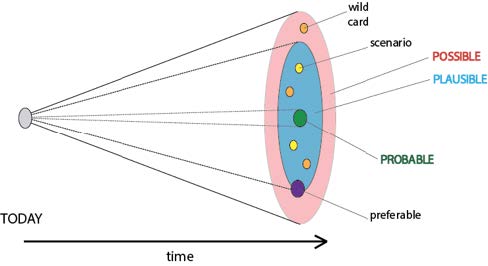Navigating the New Normal: Part 3
Posted: Apr 15, 2020
Posted: Apr 15, 2020
If you missed our earlier webinars in this series, you can read the recap or watch the full recordings of Part I and Part II.
In the third session of CFC Media Lab’s webinar series addressing strategies for small businesses in the age of COVID-19, we focused on the potential emergence of a new social contract in our society.
The inspiration for this discussion came from IDEABOOST and Fifth Wave mentor Aaron Williamson (Founder, Goal17), using his COVID-19 public health response model, based on information from the Imperial College coronavirus studies.

“We’ve been using these same quadrants to ground our conversation,” Aaron said. “After last week’s webinar, Public Health Ontario mentioned the 18- to 24-month time frame for the first time. As this becomes less a question of how long
will last, it becomes more about how we are dealing with it.”Aaron expressed the importance of leaning into pivoting his own business, instead of relying on the government for a potential bailout. At the same time, he believes now is the time to put the pressure on for advocacy. “If we want a future by design and not by default, what does that look like?” he asked.
To begin to answer this question, we were joined by OCAD U Innovation Professor and Strategic Foresight Expert, Suzanne Stein. Suzanne echoed Aaron’s desire for a future designed with intention, but expressed caution about using the term “new normal”.
“This sounds like we have found ourselves in a spot, and something is going to happen to us,” she said. “[What we want] is to move into the zone of resilience to make sure that we can chart a path forward for ourselves.”
Suzanne noted that the silver lining of long-term social distancing means we will have a lot of space to carve out our new social contract and walked participants through some of the models she uses for futures planning.
The first she calls ‘The Cone of Plausibility.’ Checking our assumptions, this model lays out probable outcomes in the centre ring, then further plausible outcomes, and finally, in the outer ring, possible outcomes, which include wild card scenarios, such as the coronavirus pandemic.

Next, Suzanne presented ‘The Three Horizons,’ a diagram demonstrating the way the systems we build lose relevancy over time, unless we commit to modifying them to change along with the external environments around them.

“The third horizon is where we’re trying to get to in our exercise today,” she said. “Which drivers and trends do we want to acknowledge that are pushing us down (that we want to let go of), and which do we want to uphold?”
Both Suzanne and Aaron emphasized the essential nature of examining possible futures for your business, even when it feels tough to think about.
“I see my revenue collapsing and have real uncertainty, and that makes me not want to sit in the future and play with it,” Aaron said. “But I can’t solve the present problems without digging in and seeing specifically what this is going to look like and where I want to put my energies. It’s hard and it feels, in a way, too soon to talk about the future, but it’s not.”
Suzanne calls that foreboding feeling ‘pre-traumatic stress disorder,’ a type of trauma that makes us short-sighted and causes an inability to plan. To combat that struggle, she introduced an exercise inspired by the needs of her collaborators at OCAD U’s Super Ordinary Lab.
“[This exercise gives us] the ability to identify things that are happening and make sense of them over time, rather than just feeling stunned and paralysed by it all,” Suzanne said.
Webinar participants were divided into smaller groups to collaborate within Suzanne’s ‘COVID Trends and Drivers’ spreadsheet, designed to break the impacts of the COVID-19 crisis into categories, including social, technological, economic, environmental, political, legal, and value-based trends and drivers. The goal of this brainstorming is to help business owners pay attention to what’s happening around them, and systematically think through their options.
Discussions within the breakout groups ranged from a re-evaluation of the value of various types of essential (and non-essential) workers, to values of ownership and wealth; from the shattering of the work/life barrier, to collective actions that can impact public policy.
This short discussion was just the beginning of understanding where to go from here, but Suzanne encouraged all participants to continue experimenting with the spreadsheet and learning in real time.
“In Fifth Wave we will be working with the individual organizations on spreadsheets like this,” she said. “This is an open tool for people to play with and keep coming back to. These trends and drivers can also be slotted into any of our four quadrants and we can see how they react.”
CFC Media Lab Founder and CFC Chief Digital Officer Ana Serrano was most drawn to the values component of this exercise, emphasizing its importance in the current climate.
“We’re at a crux where we’re in competition for values right now,” she said. “Part of what’s interesting about this work is that the choices we make as businesses drive the prioritization for certain values.”
She’s not without awareness of the unfair nature of this responsibility, however.
“We just want to put food on our tables and now we’re responsible for creating the values of a brand new social contract?!” She said, laughing. “But if it’s not us, then who?”
It’s certainly no easy task, but laying out the right questions to guide small business choices is the first step to finding the right answers.
Share this post: